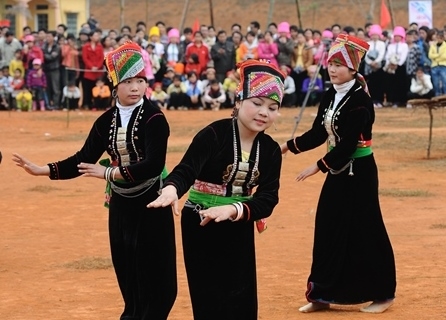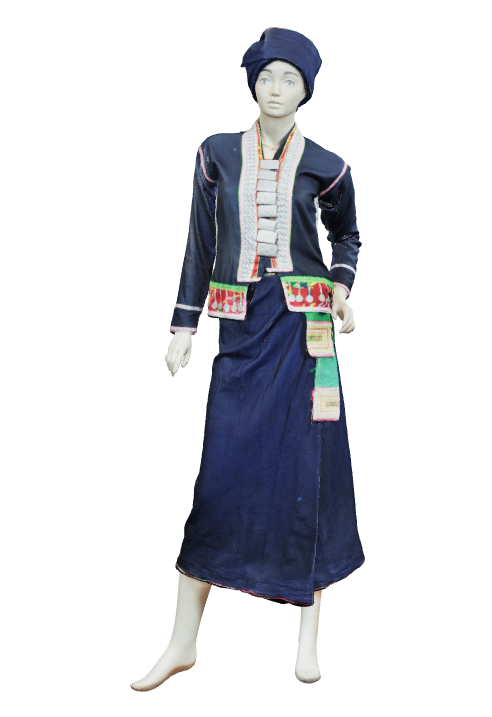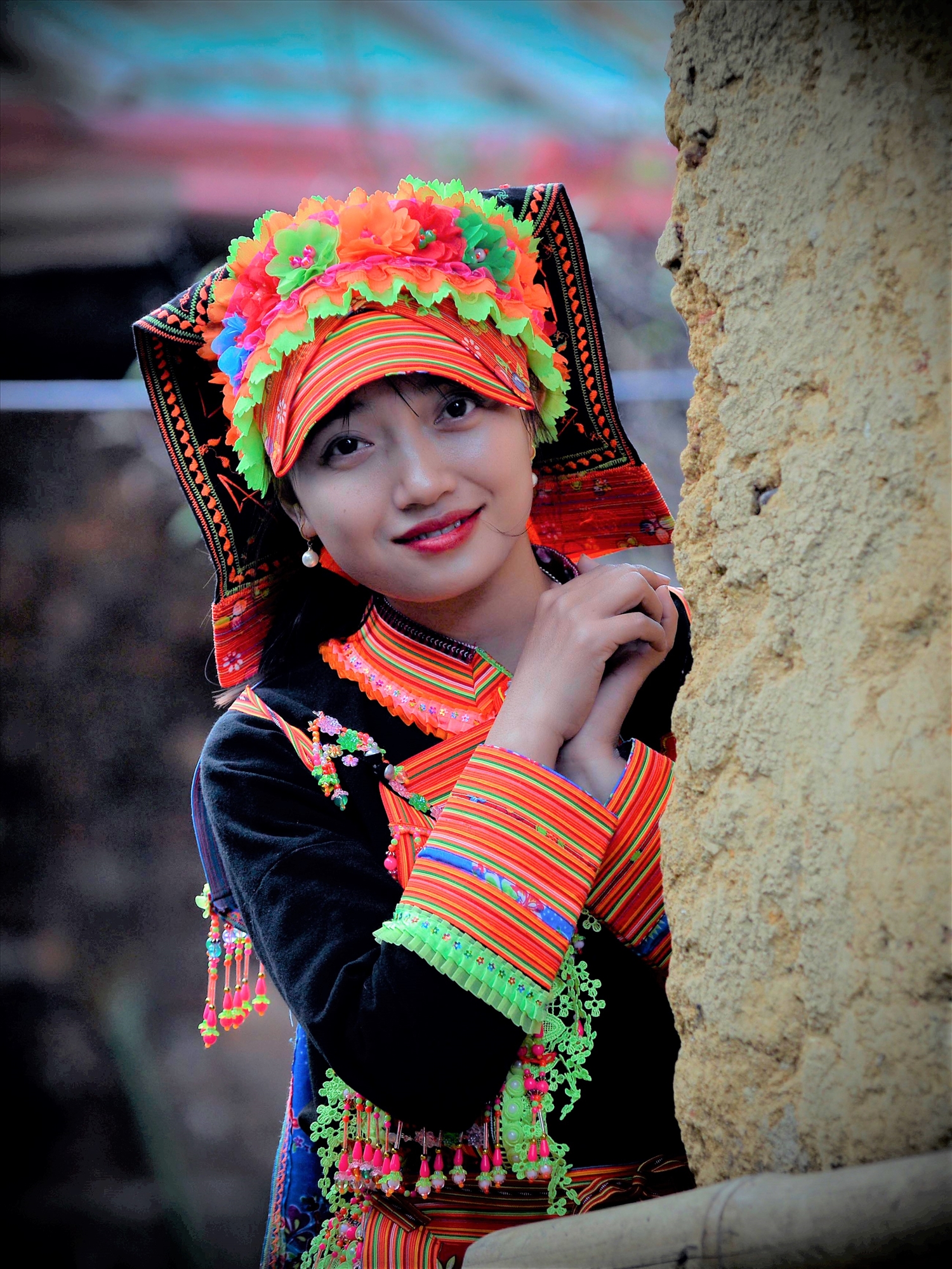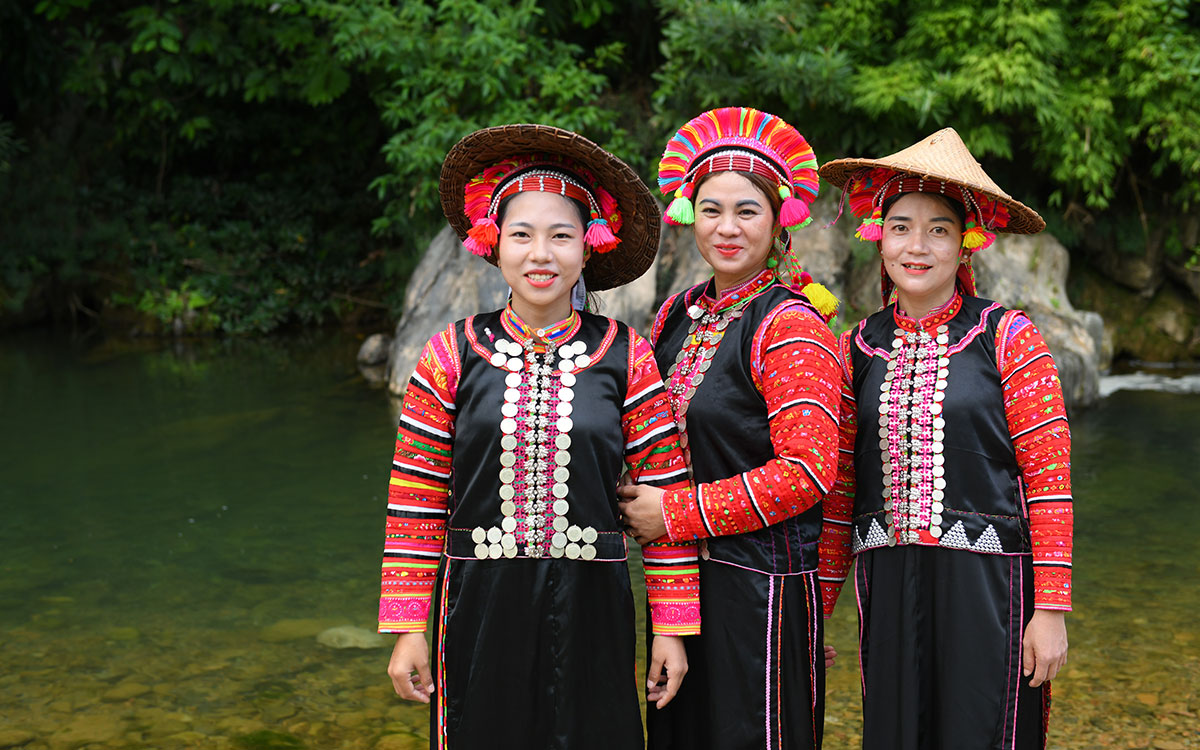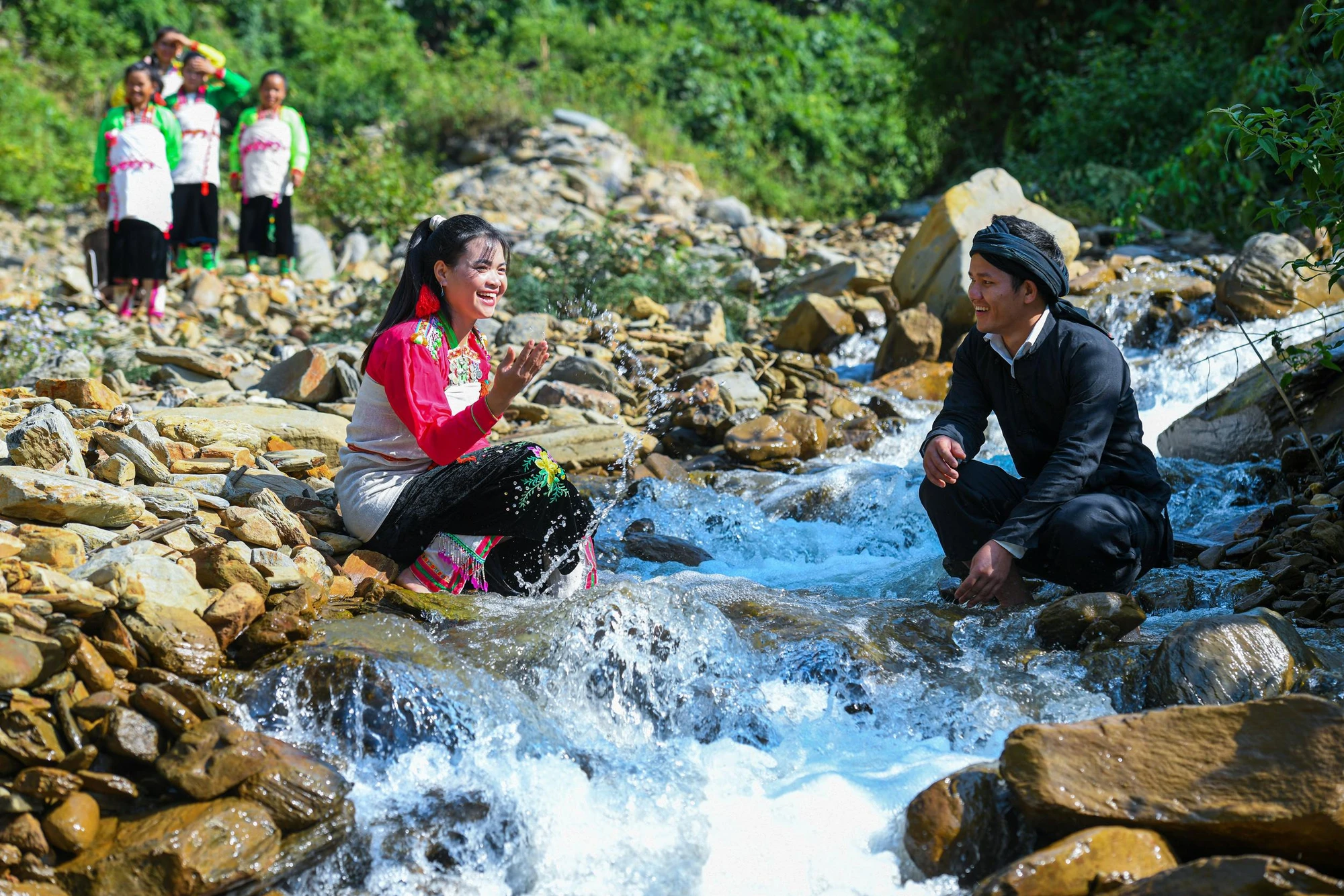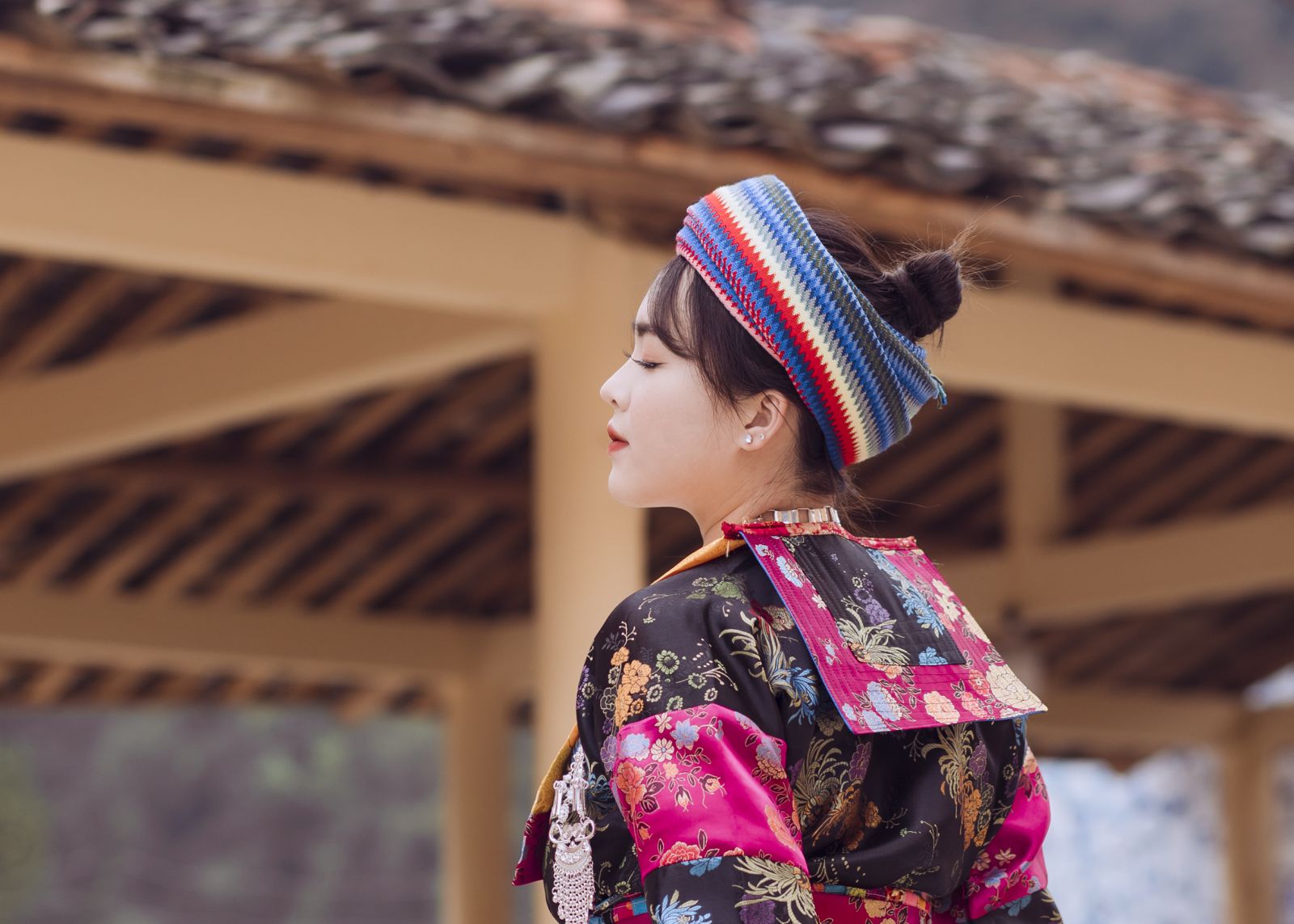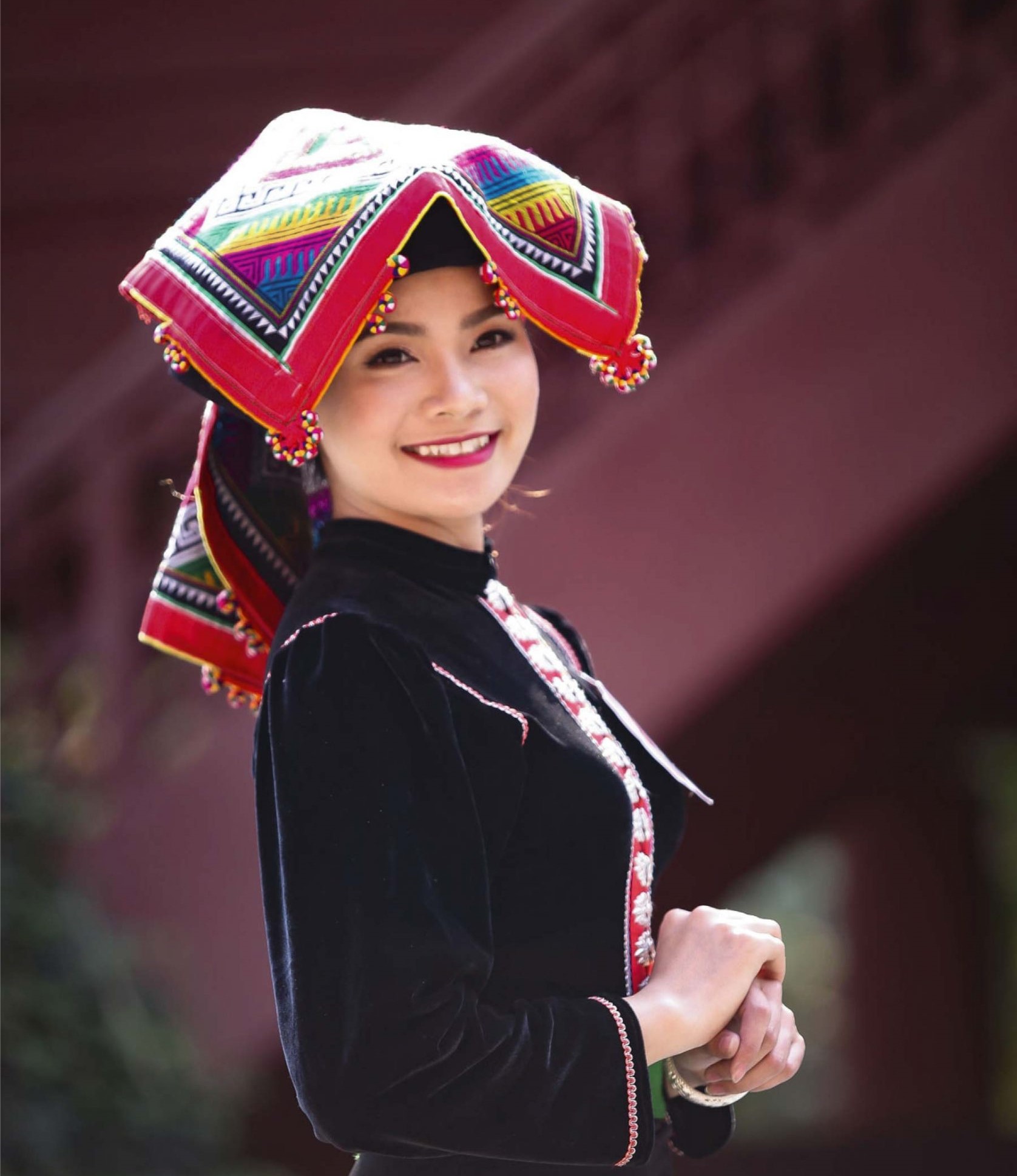KHƠ MÚ ETHNIC GROUP
INTRODUCE
- General overview
The Khơ Mú people refer to themselves as Khmụ, Kmh mụ, or Kừm mụ, depending on regional pronunciations. These names all signify “people” or “community of people.” Before the liberation of Điện Biên in 1954, the Thái people often referred to the Khơ Mú as Xả or Phủ Xả (the Xá people).
Besides the names Xả/Xá, the Khơ Mú people are referred to by various names by other ethnic groups such as Xá Cẩu, Khá Klẩu, Mảng Cẩu (those who bun their hair backward), Tềnh/Phu Thênh (people living in high mountains), Tày Hạy (those specializing in farming), Mứn Xen (myriad), and others. In the official Ethnic Groups list published in Vietnam in 1979, Khơ Mú became the formal designation. In Laos and Thailand, the Khơ Mú people refer to themselves as Kừmmụ, while Laos and Thailand people call them Khạ, Bít, Lào Thơng.
In Lai Châu province, the Khơ Mú population currently exceeds 8,000 people, accounting for approximately 2% of the total provincial population, predominantly residing in three districts: Tân Uyên, Sìn Hồ, and Mường Tè.
- Village space
Due to their nomadic lifestyle, the Khơ Mú villages in the past lacked stability. Previously, each Khơ Mú village consisted of only a few dozen houses. Every 3-4 years, they relocated to different areas. Some villages remained relatively fixed for 8-10 years, but they still practiced nomadic lifestyle. Consequently, Khơ Mú villages in the past rarely cultivated perennial fruit trees like jackfruit or pomelo. Each time they moved from one place to another, the village would be given a new name. Typically, in new living locations, the naming process for villages was predominantly influenced by the Thái language. The number of village names based on natural features was quite significant, while names derived from individuals or family lineages were less common. Within the villages, houses were arranged in a clustered manner. Beyond the residential areas, the villages also comprise cultivated lands, forests, mountainous terrain, rivers, streams, livestock yards, burial grounds, and pathways leading to the villages. All members living within the villages are permitted to exploit and utilize natural resources for their livelihoods. However, upon moving elsewhere, those rights cease to exist. Each settlement has demarcated boundaries, often marked by natural elements like stream gullies, trails, mountain peaks, or ancient trees. Nevertheless, these demarcations formed above are only approximate; individuals from one village may cultivate fields in others without facing penalties.
- Living space
The stilt house is the primary housing type of the Khơ Mú people. In some areas, there are occasionally houses that are partially elevated and partially on the ground, but these are temporary structures before constructing stilt houses.
Khơ Mú stilt houses typically feature two gables at both ends, with one or two, sometimes three rooms in the middle. The framework of the house includes columns, rafters, beams, purlins, and braces made of non-barking wood, and bamboo. The walls are constructed using split bamboo, the floor is made of “luồng,” and crushed “vầu.” These houses have very few or no windows and only have one stair.
The building materials for houses are primarily sourced from the forest. The main construction techniques involve “ngoãm, chạc, dây” and lashing, utilizing tools such as knives and axes. Recently, in many places, the Khơ Mú people have also adopted the construction of houses supported by columns, resembling the style of the Thái or the Kinh people. The arrangement of living spaces within Khơ Mú houses traditionally follows a regional standard. The right-side wing typically houses the sacred kitchen, used only for cooking during important events. The left-side wing contains the regular kitchen, equipped with stairs for access, and also serves as a space for receiving guests. The central one serves as the sleeping area for family members.
- Agricultural production activities
Cultivating fields is the primary agricultural form of the Khơ Mú people, which includes both flatland fields and sloped fields used for growing rice, corn, cassava, and various types of crops. Flatland fields represent a long-term form of settled cultivation for the community, focusing on rice and corn cultivation. On the other hand, sloped fields, after approximately 3-4 years of use leading to soil infertility, are left fallow for about 9-10 years before returning to cultivation.
The Khơ Mú people’s experience in selecting land is distilled into the saying “Black soil for rice, red soil for melons.” When planting rice, they not only carefully select suitable seeds for the type of soil but also choose specific days based on the lunar calendar, such as “tý,” “thìn,” “mão,” or “dậu,” to sow the seeds. When sowing, in addition to rice, they also intercrop corn, gourd, wax gourd, taro, and beans to maximize land usage. This practice not only increases the harvest but also helps maintain soil fertility.
During a crop, community members weed the rice field twice, take turns building shelters to guard and protect the fields, and create scarecrow straws as well as a system of sounds to scare away birds and animals that might cause damage.
- Fish ponds, and cage fish farming
Fishing in rivers and streams is also a common activity. Men use rods, throw nets, and drag nets, while women use scoop rackets. At night, many people also use lamps and carry knives to catch fish along the rivers and streams.
Collective fishing is a method where community members dam a stream to create a narrow flow of water and then place a trap there. Every 5-7 days, they remove the trap, collecting a few pounds to several tens of pounds of fish.
- Livestock production activities
Livestock farming of cattle and poultry has not significantly progressed, mainly sustaining at a subsistence level. In the past, the Khơ Mú people raised a small number of buffaloes, cows, and horses, often allowed to graze freely in the forests and brought back closer to the house at night. Recently, community members have started constructing separate pens for them. Some households have begun raising goat herds. Pigs and chickens are commonly raised yet in limited numbers. Nearly every family keeps a few dogs for hunting and safeguarding the fields.
- Culinary
The staple foods used in daily meals include rice, corn, potatoes, and cassava; among these, rice (both sticky and regular) and corn are the primary staples. Potatoes and cassava are mainly used as supplements to rice. During crop failures or shortages, potatoes, cassava, yams, arrowroot, and tapioca flour serve as crucial food sources to help overcome these periods of scarcity. Ingredients used for cooking include various meats, fish, insects, and pupas cultivated or foraged from nature. However, daily meals do not always include dishes made from meat (especially self-raised livestock such as pigs, chickens, and ducks).
The Khơ Mú people have a tradition of consuming three meals a day: a light breakfast, a main meal for lunch, and dinner. In some places, the main meals are in the morning and evening, while lunch is a lighter meal.
Like the Thái people, the Khơ Mú primarily eat sticky rice (known as “hmạ nưng”). However, they tend to make fewer varieties of colored sticky rice compared to other ethnic groups.
Dishes made from meat include boiling, grilling, pickling, drying (aprui), soup-making, frying, raw eating, and salads. The Khơ Mú people also prepare stir-fried dishes, although these are not very common. In their daily meals, the primary cooking methods used are frying, soup-making, or frying. However, during wedding ceremonies or funerals, the main methods are boiling and soup-making. Pickling is usually done only when meat is abundant. One of the most well-received dishes among the Khơ Mú people is “lam nhoọc,” also known as “ả chặn.” This is a soup made from flavorful meats mixed with vegetables, roasted lemongrass powder, rice, and spices. The soup is cooked in a pot or sometimes boiled in bamboo tubes. When fully cooked, the soup is rich and creamy, often served with sticky rice or plain rice. The Khơ Mú people also have a dish called “brịa,” made from the intestines of grass-eating animals, similar to the Thái dish “nặm pịa.” The intestines are mixed with spices (ginger, roasted lemongrass powder, wild pepper seeds, salt, and chili), boiled, and then served with boiled vegetables or fresh greens, alongside sticky rice. Another method is to use dried young intestines suspended over the kitchen stove and then cooked with vegetables and fresh bamboo shoots.
Dishes made from fish include grilled, fried, soup-based (fish-only or mixed with vegetables, bamboo shoots, or rice), pickled, and fermented (when fish are abundant). The most delicious and popular dish is grilled fish or bamboo-tube-cooked fish (cá lam trong ống nứa). Generally, scaled white fish are grilled, while black smooth-skinned fish are used in soups or stir-fried. Mixing fish intestines with spices and leaving them for a while before serving, often used as a dipping sauce for sticky rice, is also highly favored.
Preparations using molluscous typically involve making soup or frying with fermenting rice (mẻ) or making “chẻo” (from small fishes, crabs, or tadpoles). Vegetable-based dishes include soups, boiling, frying, grilling, making salads, pickling, steaming, or burying in ash.
Speaking of traditional beverages of the Khơ Mú people, one cannot overlook “cần wine” (bụi xà). This is also a highly favored type of wine.
Currently, alongside traditional dishes, the Khơ Mú people have also learned to prepare and enjoy dishes prepared in the style of the Kinh people, such as stir-fries, frying, salads, ... which appear at weddings and community gatherings.
